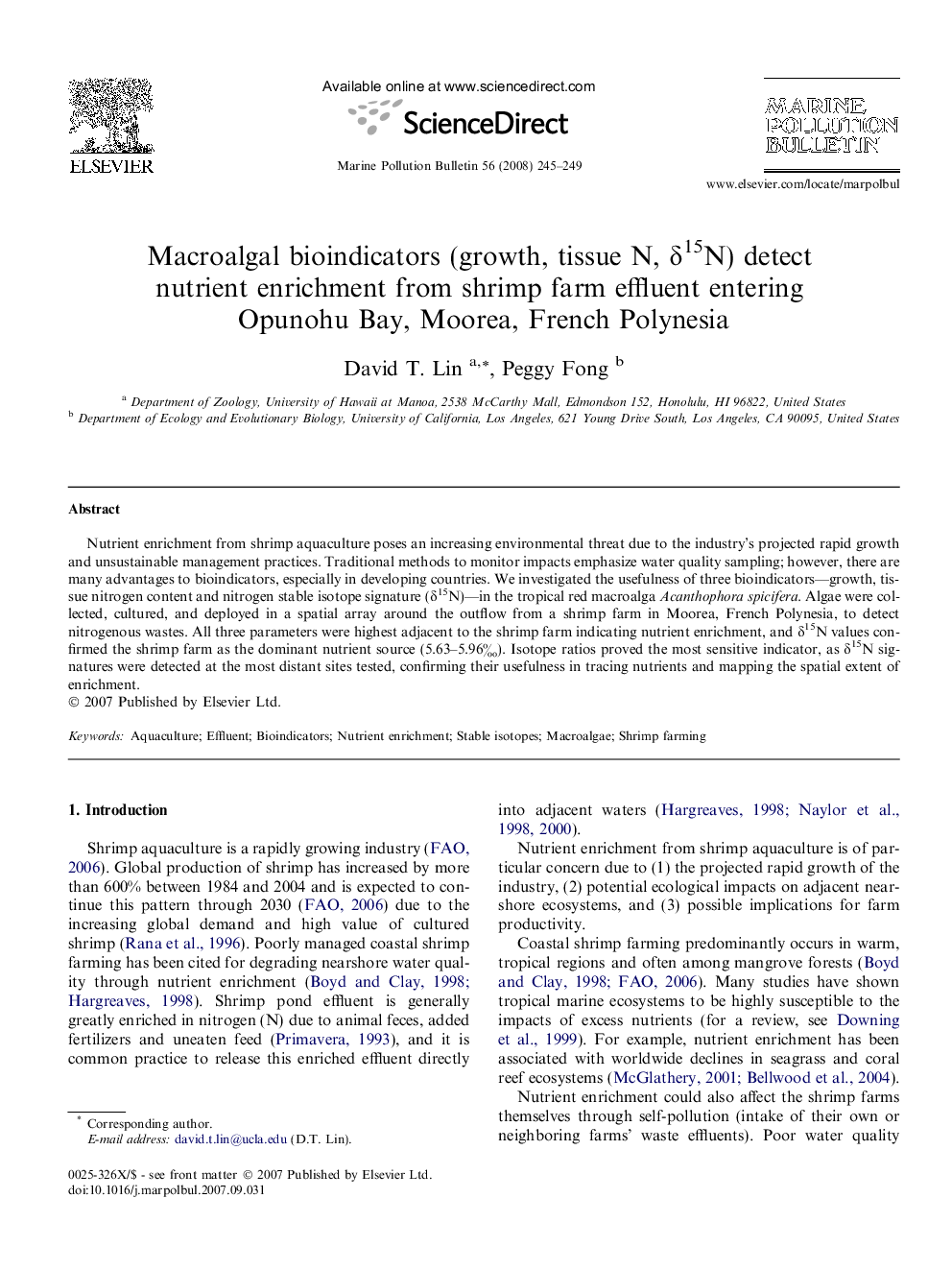| کد مقاله | کد نشریه | سال انتشار | مقاله انگلیسی | نسخه تمام متن |
|---|---|---|---|---|
| 4477270 | 1315716 | 2008 | 5 صفحه PDF | دانلود رایگان |

Nutrient enrichment from shrimp aquaculture poses an increasing environmental threat due to the industry’s projected rapid growth and unsustainable management practices. Traditional methods to monitor impacts emphasize water quality sampling; however, there are many advantages to bioindicators, especially in developing countries. We investigated the usefulness of three bioindicators—growth, tissue nitrogen content and nitrogen stable isotope signature (δ15N)—in the tropical red macroalga Acanthophora spicifera. Algae were collected, cultured, and deployed in a spatial array around the outflow from a shrimp farm in Moorea, French Polynesia, to detect nitrogenous wastes. All three parameters were highest adjacent to the shrimp farm indicating nutrient enrichment, and δ15N values confirmed the shrimp farm as the dominant nutrient source (5.63–5.96‰). Isotope ratios proved the most sensitive indicator, as δ15N signatures were detected at the most distant sites tested, confirming their usefulness in tracing nutrients and mapping the spatial extent of enrichment.
Journal: Marine Pollution Bulletin - Volume 56, Issue 2, February 2008, Pages 245–249